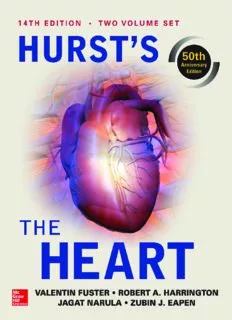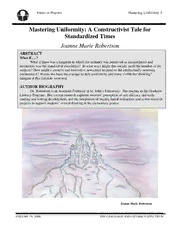
Metallic Tube Type Energy Absorbers PDF
Preview Metallic Tube Type Energy Absorbers
Metallic Tube Type Energy Absorbers: A Synopsis. A.G. Olabia,*, Edmund Morris and a M.S.J. Hashmia aSchool of Mechanical and Manufacturing Engineering, Dublin City University, Dublin, Ireland. Abstract. This paper presents an overview of energy absorbers in the form of tubes in which the material used is predominantly mild steel and/or aluminium. A brief summary is also made of frusta type energy absorbers. The common modes of deformation such as lateral and axial compression, indentation and inversion are reviewed. Theoretical, numerical and experimental methods which help to understand the behaviour of such devices under various loading conditions are outlined. Although other forms of energy absorbing materials and structures exist such as composites and honeycombs, this is deemed outside the scope of this review. However, a brief description will be given on these materials. It is hoped that this work will provide a useful platform for researchers and design engineers to gain a useful insight into the progress made over the last few decades in the field of tube type energy absorbers. Keywords: Energy absorber, tube, frusta, mild steel, aluminium, quasi-static, dynamic, ANSYS, LS-DYNA. 1 Introduction. Due to advances in transport technology and increased spending money pertaining to this, there has been a noticeable increase in the number of transportation vehicles in society. This has resulted in a greater number of fatalities, casualties due to impact collisions of one form or another, not to mention the increase in the financial burden placed on society. Due to these associated increases, society has become more aware and concerned for the safety aspects of transportation. This has fuelled scientist/ engineers particularly in the last few decades to research and develop energy absorbers with an objective to attenuate the effect of impact on people and structures. It should be noted that energy absorbers are not only applicable to the transportation sector but also to other fields of engineering such nuclear reactors, oil-rigs and oil-tankers, crash barriers for roadsides, air-drop cargo etc. In the early stages of engineering design, theoretical and experimental methods were the main techniques applied to analyse engineering structures and their response to different loading conditions. However, over the last decade due to the availability of increased computing power, FEA (Finite Element Analysis) as a form of computer simulation technique is being widely used in design and analysis across all branches of engineering to sole complex problems. This technique is proving to be very popular and is a powerful tool to understand the deformation mechanisms and responses of energy absorbers under impact loading. Application of this tool earlier on in the design / development stage can reduce the need to manufacture expensive prototypes for physical testing. The objective of this paper is to provide an insight in the area of kinetic energy absorbers that are used to mitigate impact collisions. Various work developed by researchers and engineers over the last half century pertaining to metallic energy absorbers are highlighted. Such absorbers can appear in the form of circular tubes, square tubes, frusta, struts, honeycombs and sandwich plates. This work will highlight the research and findings mainly related to tubes and frusta’s as impact energy absorbers. 2 Review of the Literature Available for the Study Energy Absorbers. To acquire a sound understanding of impact phenomena in relation to transport vehicles and structures, one is required to have sound combined knowledge of related topics such as mechanics of materials, structural mechanics, impact dynamics and plasticity. Various sources of relevant literature are available which allow interested readers to gain a detailed insight in the area of energy absorbers; The International Journal of Mechanical Science which commenced publication in 1960 has many research papers related in the field of structural mechanics (buckling and deformation of metallic and composite structures under impact). The International Journal of Impact Engineering founded in 1983 is also a strong source of literature to study the response of structures and bodies subjected to dynamic loads arising from exposure to blast, collision or other impact events. A more recent journal, namely the International Journal of Crashworthiness was launched in 1996 which is devoted to the crash behaviour of vehicles, structures, materials and impact biomechanics. Relevant literature can also be found in the International Journal of Solids and Structures, International Journal of Pressure Vessels and Piping and the Journal of Thin- Walled Structures. Hardback manuscripts such as Crashworthiness of Vehicles edited by Johnson and Mamalis [1], Structural Impact and Crashworthiness edited by Morton [2], Structural Crashworthiness and Failure edited by Wierzbicki [3] provide worthwhile reading. Finally, Lu an Yu [4] published a manuscript which combined fundamental topics pertaining to energy absorbers in order to gain a sound understanding of these devices subjected to impact loading. Zukas [5] provided two useful tables to describe the characteristics of the finite element computer code used to simulate high and low velocity impact of structures which are inherent in vehicle crashworthiness, transportation safety etc (See Table 1 and Table 2.). Ezra [6] detailed a useful overview on the assessment of energy absorbing devices for prospective use in the Aircraft industry. It was outlined that energy absorption can fall into three categories; 1) material deformation, 2) friction and 3) extrusion, in which the former is the topic of this paper. The performance of energy absorbers depends on their specific application and suitability. Various parameters such as specific energy, crush efficiency, energy efficiency are usually measured to describe the behaviour of these devices. 3 Analysis of Energy Absorbers. The function of an energy absorber is to absorb kinetic energy upon impact and dissipate it in some other form of energy, ideally in an irreversible manner. Non-recoverable (inelastic) energy can exist in various forms such as plastic deformation, viscous energy and friction or fracture energy. Circular or square sectioned tubes are one of the most commonly used structural elements due to their prevalent occurrence and easy manufacturability. Circular tubes, for example, can dissipate elastic and inelastic energy through different modes of deformation, resulting in different energy absorption responses. Such methods of deformation include lateral compression, lateral indentation, axial crushing, tube splitting and tube inversion which is outlined in the following sections. It is important to study their energy absorption characteristics and mean crushing loads so as to determine their applicability to practical energy absorption situations. Such practical cases may consist of energy absorbers in the aircraft, automobile and spacecraft industries, nuclear reactors, steel silos and tanks for the safe transportation of solids and liquids. 3.1 The Multi Collisional Situation for Multi-Transport Bodies. A transporting body which can be exposed to vehicular impact may be classified into five main categories of vehicle such as motor cars, aircraft/spacecraft, ships, locomotives and escalators/elevators. Such transporting bodies may be considered as a bounding envelope of a well defined outer shape containing personnel or cargo to be transported. To minimise damage to this bounding envelope and/or to the contents, ideally the relative velocity should be kept to a minimum. In a collision, it is this envelope which experiences the first collision, undergoing inadvertent plastic deformation along with some component fracture. The contents continue to move, due to Newton’s first law of motion, while the bounding envelope is arrested and a short time after the impact collision, the contents will collide with the inner surface of the bounding envelope. This is termed a secondary collision. However the driver may be considered as an ‘envelope and contents’ in respect to protection of the human brain. Damage to the skull may be regarded as damage to the envelope and due to the semi-liquid nature of the brain and its ability to transmit stress waves, the brain contents may also undergo damage, this would be a third collision. This set of phenomena may be referred to as a three-collision situation. In conclusion, the outer surface of any moving body undergoes the primary collision and consecutively, the contents within sustain the secondary and subsequent collisions [1]. 3.2 Lateral Compression / Flattening. Several researchers have analysed analytically the compression of a tube between rigid platens and proposed a deformation mechanism to describe the lateral compression process. DeRuntz and Hodge [7] analysed the compression of a mild steel tube subjected to quasi-static lateral loading. A rigid perfectly plastic material model was used to predict the load deformation response. The geometrical component of stiffening was accounted for in the theoretical model. However the rate of increase was under-estimated, this was due to omission of the material strain hardening phenomena. The deformed contour of the tube consists of four circular arcs which maintain their original radius whilst plastic deformation occurs at the hinges only. Redwood [8] endeavoured to include the effects of material strain hardening which was omitted by DeRuntz. A rigid linear strain hardening material model as opposed to a rigid perfectly plastic model was used to predict the force and energy absorption response. The effect of strain hardening was further examined by Reid and Reddy [9]. The theoretical model produced by the authors is based on a rigid linear strain hardening material model and is the most accurate one to date. The authors improved the strain hardening prediction by replacing the localised hinges with an arc in which its length changes with deflection. Hence, this theoretical model accounted for both the geometric and material strain hardening effect. An important dimensionless parameter which was developed, governs the shape of the force-deflection curve. This parameter is defined as ‘mR’ and is a function of the yield stress in tension, the mean radius R of the tube, the strain hardening modulus E and the thickness t. According to Reid and p Reddy, it may be possible to maximise the energy absorbing capacity by choosing appropriate tube dimensions such that the ‘mR’ value is minimised since this is a function of tube geometry. Reddy [10] studied the phenomenon associated with the crushing of metal tubes between rigid plates. Aluminium and mild steel tubes were compressed laterally in an Instron machine. It was found that intermittently annealed tubes corresponded closely to the perfectly plastic theory. This was due to the fact that strain-hardening effects were gradually removed due to this annealing process. For the ‘as-received’ tubes and the ‘once’ annealed tube, a large discrepancy was found between those of experiment and the perfectly plastic theory. This was due to existence of strain hardening in both materials which is not accounted for in the theory. Gupta et al [11] conducted a comprehensive experimental and computational investigation of circular metallic tubes subjected to quasi-static lateral loading. Specimens analysed consisted of both mild steel and aluminium tubes with different diameter to thickness ratios. Their corresponding force-deflection responses were obtained and examined in detail. An in depth description was provided on the deformation mechanism of a tube compressed between flat rigid platens. A quarter cross section of a typical tube was divided into zones to help describe the deformation mechanism as shown in Fig. 1. Avallel [12] examined the strain field generated during the lateral compression of aluminium tubes and proceeded to verify the various theoretical models such as [7, 8 and 9], it was found that the latter accounted for all the main features observed experimentally, hence this model seems the most realistic in describing the actual behaviour of the tube compressed laterally both qualitatively and quantitatively. Reddy and Reid [13] examined both theoretically and experimentally the quasi-static lateral compression of a tube constrained so that it’s horizontal diameter is prevented from increasing. This is a way of increasing the specific energy absorption capacity of the tube by introducing more plastic hinges into the structure. Also, the relationship between a single tube and a system of tubes with different configurations was investigated. It was found that the energy absorbed by a closed system (side constraints) is three times more than that of an open system (no constraints); however the maximum deflection of the former is less that that of an open system. Overall it can be concluded that the introduction of side constraints and creating a closed system is a feasible method of increasing its energy absorbing efficiency. The compression of copper tubes between flat plates with R/t ratios from 1.5 to 7.5 was studied experimentally by Reid and Reddy [14]. It was found that the ‘Plastica’ theory developed by the authors could be used to predict the ring compression behaviour for a ring having an R/t value greater than 3.5. It was found that rings with an R/t ratio less than 3.5 did not correlate very well with the experiments, this was due to the fact that shear effects as opposed to bending effects was the dominant mode of deformation, and this is not accounted for in the aforementioned theory. Reddy and Reid [15] proposed a method to calculate a more realistic force-deflection curve using a rigid linear work hardening material model. These tubes were also compressed laterally between rigid platens. It was suggested that an average value of strain hardening modulus could be used to calculate the parameter mR [9], therefore these two parameters would considered constant throughout the deflection range. However, it has been further proposed that if the variation of strain hardening modulus with strain is known, this could be used to update mR at each load step or load increment and thus obtaining a more realistic load-deflection characteristic. It was suggested that the method described above could be used as a basis for obtaining some of the material properties from a ring compression test. A nested system analysed by Shrive et al [16] consisted of two concentric rings with a layer of smaller tubes between them, the axis of all tubes been parallel. Tack welding was used to attach the rings to the concentric tubes. It was found that increases in system stiffness, maximum load and energy absorption was apparent as the level of tack welding increased. From the impact loading experiment, it was found that full deformation did not occur but maximum opposing forces similar to the quasi-static case were observed. A nested system in the form of orthogonal layers of aluminium and mild steel tubes under quasi - static lateral compression was investigated by Johnson et al [17]. Such an orthogonal layer consists of a row of tubes stacked upon each other with every second row rotated ninety degrees. The authors concluded that nested ductile tube systems play an important part in producing a monotonic load-deflection response. In addition to this, the systems which exhibit cracks after loading only induce oscillations into the response and do not produce catastrophic failure in the system as a whole. Reid et al [18] investigated the role of system inertia of nested energy absorbers in the form of a line of rings subjected to impact. Dynamic test were carried out on a simple one-dimensional apparatus. This apparatus consisted of a horizontal base plate with two guide rails in which a sledge is attached and impinges the line of rings. The sledge is propelled by means of a cartridge gun which can achieve velocities in the range 30-120 m/s. Various systems of rings were experimentally tested, with changing parameters such as different materials, diameter to thickness ratios and the number of rings. They concluded that system inertia has the effect of controlling the time over which particular elements of the system deforms. Also, they concluded that the insertion of discrete masses in the form of small plates between the rings further increases the time in which the system deforms. This is seen as a more efficient use of the ring as a basic energy absorbing element. The effect of strain rate on the dynamic lateral compression of tubes was examined by Reid and Reddy [19]. They endeavoured to find a relationship between the dynamic and quasi-static load-deformation characteristic of thin walled tubes compressed laterally between rigid platens. This was achieved by using an existing quasi-static large deflection theory developed by Reid and Reddy [9]. The theory was modified to include the effects of strain rate due to the loading rates applied. They found that the modified theory can give a good estimate of the dynamic load-deflection response and subsequently the energy absorbing capacity of mild steel and aluminium tubes can be estimated. Nested systems in the form of a line of rings subjected to end impact loading were examined by Reid and Reddy [20]. The authors were principally concerned with identifying the main mechanism which controls the deformation of such systems. Upon experimentation, the main parameters were identified and varied, thereby leading to a suggestion for the construction of a mathematical model of the system. It was found that in low speed impact testing on tube systems, the effect of inertia was secondary; therefore the design of energy absorbing systems could be achieved provided that the material strain rate was taken into account. Reddy et al [21] described experiments in which a variety of one dimensional systems with free distal ends, as opposed to fixed ends, were subjected to lateral impact by a rigid projectile. An elastic– plastic structural shock wave theory, which employs a bilinear material model to describe the collapse behaviour of the rings, was used to analyse the deformation of typical ring chain systems. Reid et al [22] experimentally analysed the energy absorbing capacity and collapse mechanism of braced metal tubes compressed under rigid platens. Their aim was to design an energy absorber to cope with both the ‘redirectional’ and ‘trapping’ of vehicles involved in side impacts. ‘Redirectional’ is a term used to describe where the vehicle has moved back onto its original line of travel after the collision has occurred. ‘Trapping’ involves catching the vehicle so as to prevent the probability of secondary conflicts occurring with oncoming traffic. They conducted initial investigations on small scale components to explore the possibility of achieving the desired response by introducing tension members across the diameters of the mild steel tubes. Both single and double braced tubes of various angles were analysed. They stated that the response of a braced tube, whether singly or doubly, is sensitive to the direction of loading, however, significant enhancement in the energy absorbing capacity of such systems can be achieved. Full scale testing was also carried out on double braced tubes used as a cluster in a modular crash cushion. The finite element computer simulation of the lateral compression of aluminium tubes was conducted and analysed by Leu [23]. An elastic-plastic model based on the updated Lagrangian algorithm was employed to predict the buckling, punch load and deformed geometries of aluminium tubes. The static explicit approach was used as opposed to the implicit method so as to avoid convergence problems. A power law relationship was used to represent the stress-strain curve of the aluminium tubes. The effect of the strain hardening exponent, friction coefficient values, elastic modulus, thickness of tube were examined in relation to the deformation process and how these parameters affect the occurrence of buckling and punch load. It was concluded that such analysis of these parameters may help to understand the buckling mechanism of aluminium and clad tubes. Gupta and Ray [24] studied the collapse of thin walled empty and filled square tubes under lateral loading compressed between rigid plates. Various sizes of tubes were analysed both in their ‘as-received’ and ‘annealed’ conditions. The filler material was in the form of polyurethane foam and Kail wood. A theoretical analysis was presented to compute the peak load and load-deflection responses. Excellent agreement was found between the predicted and actual measured values. As expected, the inclusion of a filler material increases the specific energy absorbing capacity. Moreover, the major advantage of using this material is that the post collapse load-deflection response increases without increasing the collapse load. Another advantage as reported by the author was that the stroke length increases due to the filler material which delayed the onset of locking until a later displacement was reached. In view of how the effect of strain hardening becomes more important in impact situations due to high strain rates and large deformations, Sherbourne [25] analysed theoretically the compression of tubes under rigid platens using the ‘Moving Hinge Method’. Although this theory is mainly applied using a rigid-perfectly plastic material model, the author attempted to include the effects of strain hardening into the model. It was found that the load-deflection results were in good agreement with experimental data. Also, in comparison to other theories such as ‘Limit Analysis’ by DeRuntz [7] and the ‘Plastica Theory’ by Reid [9] in predicting the collapse load, it was found that the ‘Moving Hinge Method’ allows for more manoeuvrability without compromising the accuracy of solution. Finally, it was noted that the ‘Moving Hinge Method’ can also be applied to other deformation modes such as axial compression of tubes. This appears to be an advantage of the theory since the other methods used are only applicable to tubes compressed laterally. Wu and Carney [26] analytically analysed the initial collapse of braced elliptical tubes under later compression. Elliptical tubes provide a distinct advantage over their original circular tube counterparts in that their crush efficiency is greater. This automatically implies that the specific energy absorbing capacity of such devices increases, which is a desirable feature in the design of impact attenuation devices. Another method of increasing the specific energy absorbing capacity of these cylindrical or elliptical devices is through the inclusion of metallic braces or wire. These can be attached to the devices either horizontally or at an angle. This generates a larger collapse load and hence the specific energy absorbing capacity is increased. Three possible collapse mechanisms for braced circular tubes as established by Reid [22] have also been found to exist for braced elliptical tubes. These three cases are tubes with small bracing angles, tubes with horizontal bracing and tubes with large bracing angles. It was found that the initial collapse load of braced elliptical tubes was dependant on both the ratio of the ellipse axes b/a, and the bracing angle. ABAQUS, a finite element software was used to capture the deformation mechanisms and the magnitude of the initial collapse load of the devices. Fig. 2 shows the symmetric and asymmetric deformations for a 00 braced elliptical tube. In a companion paper, Wu and Carney [27], presented the experimental results of braced elliptical tubes compressed laterally under rigid platens. This was to authenticate the numerical and theoretical results presented in their initial paper. It was found that for a ratio of b/a = 1 (Circular tubes), the initial collapse loads predicted from the EST method (Equivalent Structure Technique), ABAQUS and experiments were comparable, particularly for small-angle braced tubes. However, for large brace angles, the experimental result were below theoretical predictions and according to the authors, was due to the tubes being highly sensitive to geometrical imperfections. Finally, it was noted that the ABAQUS results were much lower than the results predicted by the EST method and this appears to be due to the omission of membrane stresses in the latter case. Fig. 3 shows the finite element model at two stages of displacement. Similar to the above author’s work, Olabi et al [28] analysed both experimentally and numerically the dynamic lateral compression of elongated circular tubes (oblong tubes). The dynamic lateral crushing of mild steel (DIN 2393) nested tube systems was conducted using a ZWICK ROELL impact tester. The tests were performed with impact velocities ranging between 3 and 5 m/s, achieved using a fixed mass impinging onto the specimens under the influence of gravity as shown in Fig. 4. The various nested tube systems consisted of one standard and one optimised design. Their crushing behaviour and energy absorption capabilities were obtained and analysed. It was found that the optimised energy absorbers exhibited a more desirable force-deflection response than their standard counterparts due to a simple design modification which was incorporated in the optimised design. This mechanism proved to be a very favourable one for the reason that the resulting crushing force remained constant throughout the deflection once the collapse load has been reached. This is a desirable feature in the design of energy absorbers (See Fig. 5). Morris et al [29] analysed the quasi-static lateral compression of nested tube systems between rigid platens both experimentally and numerically. These energy absorbers consisted of both two and three tube systems which were assembled ‘In Plane’ as shown in Fig. 6. Such a term describes two or more tubes of varying diameter being placed within each other and their axes being parallel. This type of energy absorber was compressed under flat rigid platens at a velocity of 3mm/min to ensure no dynamic effects were present. It was demonstrated how such a system is well suited to applications where space or volume restrictions are an important design consideration without compromising energy absorbing requirements. Morris et al [30] also analysed the post collapse response of nested tube systems with side constraints (See Fig. 7). This work illustrated how the introduction of external constraints allows a greater volume of material within the structure to deform plastically in the post collapse stage of compression, thereby absorbing more energy. Nested systems consist of ‘short tubes’ of varying diameter placed within each other with an eccentric configuration. Both experimental and computational techniques were used to analyse the quasi-static response of such systems. Numerical results generated were found to be in good agreement with those of experiment. In a related work, Morris [31] modified the ‘In Plane’ system by rotating the central tube ninety degrees to define an ‘Out of Plane System’ as depicted in Fig. 8. In doing so, the force-deflection response changed from a non-monotonically increasing response to one that increased monotonically without sacrificing its energy absorbing capabilities. The quasi-static lateral compression was achieved using three different devices such as flat rigid platens, cylindrical and point- load indenters and their corresponding force-deflection response were compared. Morris et al [32] also studied nested tubes crushed laterally between rigid platens at two different velocities. The first category of energy absorber consisted of an ‘In Plane’ system; the second device consisted of an ‘Out of Plane’ system. Material used was cold finished, drawn over mandrel (DIN 2393 ST 37-2) mild steel. The Cowper-Symonds relation was used to predict the dynamic yield stress of the rings and this was included in the finite element material model.
Description:The list of books you might like

Mind Management, Not Time Management

Credence

Do Epic Shit

The 5 Second Rule: Transform your Life, Work, and Confidence with Everyday Courage
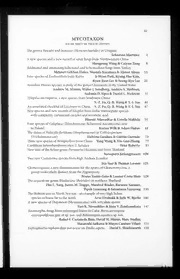
Mycotaxon 2006: Vol 96 Table of Contents

Ocio humanista: dimensiones y manifestaciones actuales del ocio

Relief Beyond Belief. Silhouette Dieforming in Polymer Clay
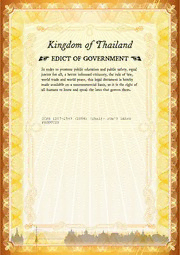
TCPS 1267-2549: JOB'S TEARS PRODUCTS

The Winds of Chance by Rex Beach

Brief Couples Therapy Homework Planner (PracticePlanners)

Access 2013: The Missing Manual

C anton (©bsferVitr

C anton O bsierber

C anton €>bserUer Supporters to lobby for airport purchase
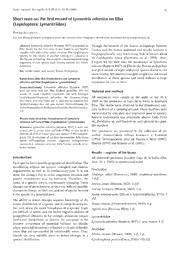
Short note on the first record of Lymantria atlantica on Elba

C anton €>bSerUer Board OKs 3 officer spots; new dispatch
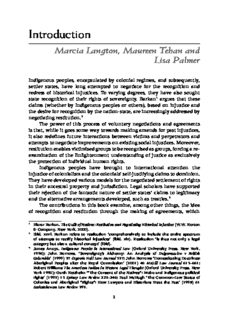
Honour among nations? : treaties and agreements with indigenous people

40%的工作沒意義,為什麼還搶著做?論狗屁工作的出現與勞動價值的再思

Hesiod's Theogony: from Near Eastern creation myths to Paradise lost
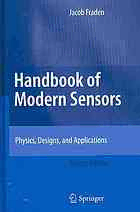
Handbook of Modern Sensors: Physics, Designs, and Applications

Nureyev. La vita
